Van Den Heede: a true old salt
Published on August 16th, 2023
The inaugural Global Solo Challenge 2023-24 seeks to be a budget-friendly solo, non-stop race around the world. For boats from 32 to 55 feet with an IRC rating below 1.370, a pursuit start over 11 weeks begins in A Coruña, Spain, with the first boat to return deemed the winner. In this report by Margherita Pelaschier, she interviews Jean-Luc Van Den Heede, an entrant for the upcoming start:
Behind the scenes of the Global Solo Challenge, we meet a true old salt, the famous French solo navigator Jean-Luc Van Den Heede, who offers his valuable advice and support to many skippers. Deeply convinced of the solidarity among sailors, he will follow this staggered-start event with great passion, a challenge that promises to be thrilling and full of suspense.
This veteran of circumnavigations has completed six: the BOC Challenge in 1986 and 1995, the Vendée Globe in 1989-1990 and 1992-1993, and the Global Challenge in 2004, during which he completed a westward circumnavigation against prevailing winds and currents, becoming the undisputed holder of this record.
He also enriched his achievements by winning the first edition of the modern Golden Globe Race (GGR) in 2018, an “old-fashioned” race, navigating with a sextant and without external communications, following in the footsteps of the pioneers who undertook this non-stop journey for the first time in history in 1968.
Regarding the formula of the Global Solo Challenge, the new non-stop round-the-world challenge that will start on August 26th from A Coruña, Jean-Luc Van Den Heede commented: “It’s an exciting format. Many people dream of going around the world, and it’s much more thrilling to participate in competition with other sailors, rather than embarking on such an endeavor alone.
“I think this innovative concept will allow very different boats, of different classes, to compete in real time. The idea of having staggered starts to conclude with a theoretical real-time finish is very enticing. It will be a sort of chase race, where the fastest will try to catch up with the slowest, who started earlier. It will be fun.”
In such a demanding competition, the challenges are plentiful. With his deep experience in these adventures, Van Den Heede asserts that: “The real challenge for the competitors is to be on the starting line. Indeed, although initially many competitors had registered, only about twenty will take the start. Therefore, the first hurdle to overcome is finding a suitable boat to participate.
“This requires time, money, potential sponsors, and perhaps even the help of a team. Showing up at the start of a round-the-world race is a challenge in itself. Then, once underway, the other great challenge is reaching the finish line. For example, during the last edition of the Golden Globe Race: out of 15 participants, only 3 finished it, that’s just 1 in 5. Regarding the GSC, even though the boats are more competition-oriented than those of the GGR, they could still encounter breakdowns, as in all round-the-world races. However, I hope that most competitors will be able to complete the race.”
Considering the round-the-world trip divided into three legs – from the start towards Cape Town, the transit in the Great South, and finally, the climb from Cape Horn to the finish – the French sailor explains his vision for each of these phases to best manage the race: “The GSC has a peculiarity compared to, for example, the races in the Imoca class and the GGR: the competitors will start on very different dates.
“Therefore, the weather conditions will not be the same for the skippers who will start first in September and those who will start last in December/January. Each participant will have to adapt their strategy to their own weather conditions. The first leg towards Cape Town is essentially tactical. Some, like Vendée Globe participants, might choose to descend the Atlantic pushing close to Brazil, while others might prefer a more direct route, as was the case during the GGR in 2018.
“Tactical choices in response to weather conditions will be decisive in this first phase. For the second leg, the navigation will mainly be downwind. The goal is simple: sail fast, without damaging the boat up to Cape Horn. But beware, sailing fast downwind always carries risks.
“In the last virtual leg of the race, after passing Cape Horn, many think they are almost there, but navigation is still challenging, especially due to the changes in weather and climatic conditions on this long climb northwards. Sailing up the South Atlantic, crossing the equator, passing through the Doldrums (editor’s note: the intertropical convergence zone), and then facing headwinds and northern trade winds in the North Atlantic: the race is far from over.
“Moreover, the boats are already “fatigued” and put to the test by the two previous phases. It’s essential to persevere for both the sailor and the boat until the end. It will be an exciting race to follow, and I even considered the possibility of participating, but then the project did not start. However, I find it innovative and captivating.”
VDH, recognized as one of the greatest navigators of our time, has always shown a great willingness to help skippers in search of advice, demonstrating unique humility and simplicity, despite his extraordinary successes. A question naturally arises: in today’s ocean races, is there still this deep solidarity among competitors? And how much can it truly enrich a competition?
“I think it depends on the races. As the participants become more professional, their interests may diverge. Even though, of course, at sea any competitor would rush to the aid of any other, sometimes differences can emerge within a class. For me, team spirit is essential.”
When it comes to reusing existing boats in competitions, compared to the current trend of always building new ones in the name of innovation in the world of sailing, Van Den Heede has a clear opinion: “I am in favor of repurposing already-built boats, possibly repairing them to give them a new life and to keep them sailing.
“The Imoca class has undergone various evolutions over the years. The boats currently produced are designed to last between 10 and 20 years at most, after which their potential for use decreases. Yet, the boats with which I participated in the first two editions of the Vendée Globe are still operational and used by private individuals for cruising.
“I have doubts about the longevity of the latest boats with foils: even if they manage not to become obsolete in two decades, they would still be overtaken by newer, faster models. This constant pursuit of innovation seems unstoppable. For this reason, I appreciate competitions like the Global Solo Challenge or the Golden Globe Race, which prioritize boats already in use and accessible to the general public. They are prestigious races and at the same time respectful of the environment.”
Facing a round-the-world sailing voyage is undoubtedly a tremendous challenge, filled with moments of fatigue and discouragement. But for VDH, deciding to embark on such an adventure is a thoughtful choice. Even in the most challenging situations, it is essential to keep motivation high, avoiding complaints.
He firmly believes that every skipper must find that personal spark that drives them forward, finding inspiration in competition with other participants. “Going around the world alone, aboard your own boat, is a privilege that many admire and many envy. In moments of uncertainty, it’s crucial to remind yourself of the extraordinary opportunity you have.
“Everything else becomes a matter of determination. In the GSC, the competition is alive; skippers can monitor the positions live. The goal is to catch up to those ahead and try not to be overtaken by those behind. It’s a never-ending game that keeps you on the edge of your seat, unlike the GGR, where the position of the opponents is uncertain. Every day offers its dose of suspense: have we overtaken an opponent or have we been passed?
“There is a healthy rivalry. Being unable to communicate and not knowing where the other competitors are, for me, reduces the allure of the competition. During my participation in the BOC Challenge or Vendée Globe, knowing where the others were motivated me. In 2004, when I set my record for the round-the-world voyage in the opposite direction and was alone at sea, I constantly compared myself to the performance made by Philippe Monnet, who, having set off from Brest in January 2000, had completed it in 151 days.
“In the end, I finished it in 122 days, and my record is still unbeaten, for monohulls. In those moments, when I already had, for example, a 15-day lead on Philippe’s passage, I aimed to bring it to 16 or 17, to aim ever higher. I have always needed this spirit of competition, this drive to improve myself.”
During a race of such duration, it is crucial to allow oneself moments of comfort and pleasure. For VDH, celebrating small achievements plays an essential role. And what better way to do so than with one’s favorite foods?
“Nutrition is not just a necessity, but a ritual that marks the passage of the days. It helps establish a routine and allows us to perceive the flow of time. Therefore, it is vital to have on board the foods we love. I, for example, make a point of marking significant milestones with small celebrations: crossing the equator, passing south of Cape Town, Christmas… Celebrating every single goal, even the smallest one, makes the long circumnavigation more bearable.
“Segmenting the race into different virtual stages helps better cope with each phase of the regatta. And something that could never be missing from my galley? During my second Vendée Globe, I forgot to bring chocolate with me. That absence was felt!”
VDH admits that, since the GSC has not yet begun, it is difficult to make predictions about the favorites. He has met several skippers who will participate in the challenge, and others who eventually withdrew.
“The key element in the GSC is to have a good rating that accurately reflects the performance of your boat. The event is regulated by the IRC rating, so it’s essential to have a rating that corresponds to the actual speed of the vessel. If I had participated in this competition, I would have chosen my Wasa 55, LET’S GO, with which I did my first round-the-world trip during the BOC Challenge in 1986, coming in second.
“This boat still sails, has an excellent IRC rating, performs well with the wind at the stern, and is very safe. I will closely follow the evolution of the GSC. In my opinion, those who start last probably will not have the opportunity to reach the first. We will see.”
He concludes by sending a message of encouragement to all GSC skippers: “First and foremost, I hope they are fully aware of the luck they have in finding themselves on the starting line of such a significant event in their lives. My greatest wish is that as many of them as possible reach the finish line, and that ideally, five of them arrive there on the same day, at the same moment.”
A big thank you to Jean-Luc Van Den Heede, and fair winds to this great sea dog!


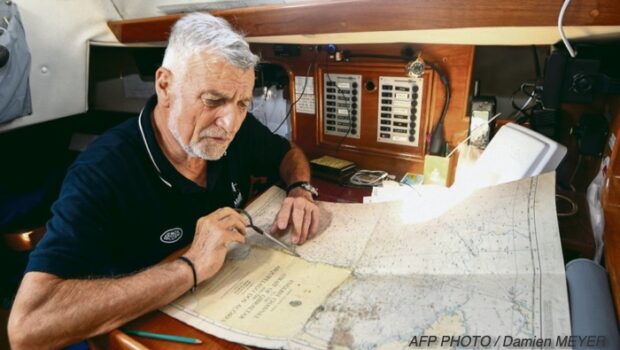


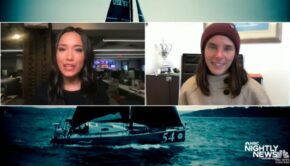
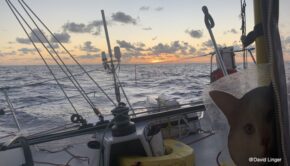
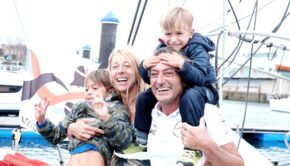
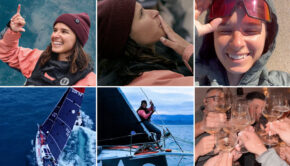
 We’ll keep your information safe.
We’ll keep your information safe.